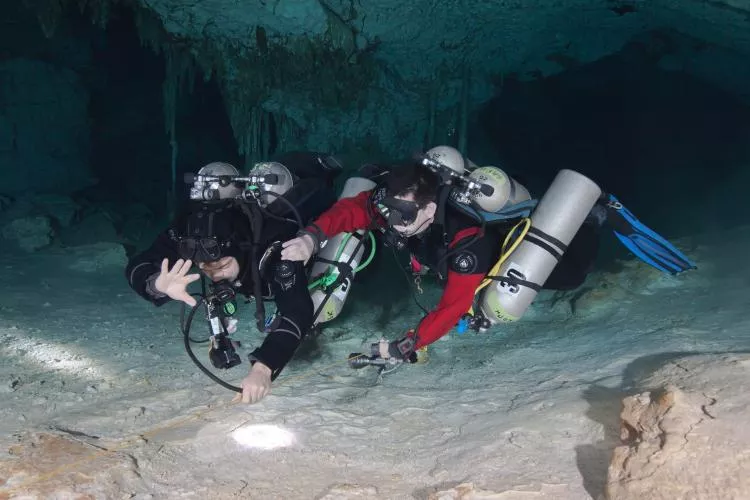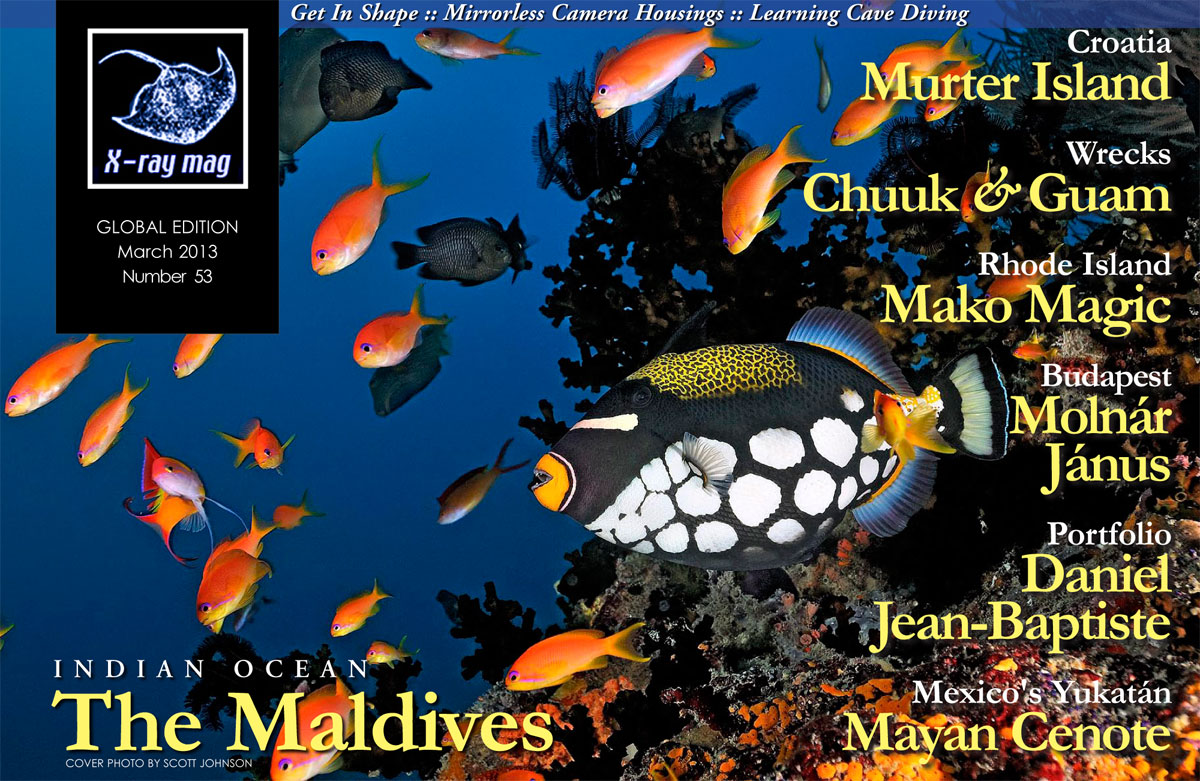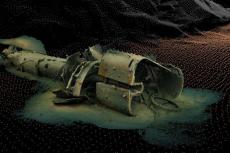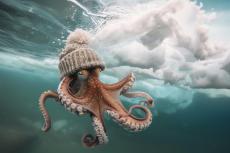Two buddies are holding the line. The second is holding the arm of the one leading the way, communicating with him by means of touch. With visibility nil, the first buddy protects his head and face with his hand in case of contact with a wall or rock.
Suddenly, for some unknown reason, the line moves and goes out of their hands. They search for it but to no effect. Their mistake: they were not holding the line properly. Will they panic? No. Their nearby instructor stops the exercise. The entire scenerio took place on dry land.
Contributed by
Near the diving center, a guideline was stretched and positioned between some trees. Following a classroom explanation of methods and emergency procedures, the techniques are performed on a land drill prior to their underwater implementation. The exercises enable students to master techniques, correcting and commenting on them right during the exercise. These are often treated in the ludic fashion, allowing time to joke and relax. Zero visibility is simulated by bandages that can be easily removed, providing a very interesting learning instrument.
Is overhead diving a marginal and difficult activity?
No, not at all. In fact, it’s the other way round. Along with the rebreathers, the technical discipline with the greatest development is diving in overhead environments. While rebreather diving currently induces fewer concerns today, overhead diving remains worrying for many potential students. Many harbour groundless fears, like getting wedged into narrow galleries, zero visibility and freezing water to name a few.
The courses take place with a minimum of several metres visibility in galleries with more than comfortable dimensions. Water temperatures vary from 13-14°C in the Lot region of France, up to 26°C in Mexico, with Croatia (18°C) and Florida (22°C) in the mid-range. In the Jura in Switzerland and northern Italy, the water is a chilly 7-8°C, going even lower to 4-6°C in the Russian Ordinskaya Cave. However, the water is generally not that cold. A drysuit and good undergarment ensures there is no problem.
A frequent fear is the course’s difficulty, with some people imaging the training to be very demanding. The course’s goal is to introduce divers to this new environment and allow them to continue down this road in total safety. However, being claustrophobic is a definite hindrance!
What are the different stages?
The first level is Cavern, a two-day discovery of overhead diving without going deeper than 60m. Maintaining sight of daylight at the entrance allows the ideal conditions to discover this type of diving.
The second level is the introduction to Cave. This is the first level where students penetrate a cave to within 60m from the entrance point with the absence of daylight. These two levels do not involve any restrictions, complex navigation or poor visibility.
At NACD (National Association for Cave Diving) and NSS-CDS (National Speleological Society-Cave Diving Section), the next level is Apprentice cave diver followed by (Full) Cave Diver. The majority of other diving agencies have grouped these two last levels together in the final training of self-sufficient divers in the overhead environment (Cave or full cave diver), usually over four days. It is possible to make a combination of these courses over several days or a week.
You can find this type of curriculum, originally issued by NACD and NSS-CDS, at the agencies like TDI or IANTD. These courses can be taken in open-circuit or with a rebreather. These are two different courses, and can be optionally followed by cave specialty courses: sidemount, stages, scooter or topography.
DIR agencies like GUE, UTD or InnerSpace Explorers have a slightly different curriculum. From the very beginning, divers must pass basic skill training including Hogarthian configuration, buoyancy and horizontal anti-silting position in the water (trim), frog kick, safety drill (assisting with long hose of 2m length), valve drill (closing the valves in case of leak), team positioning during progression or communication (like a star). In this way, these skills are already mastered before the special (...)














































